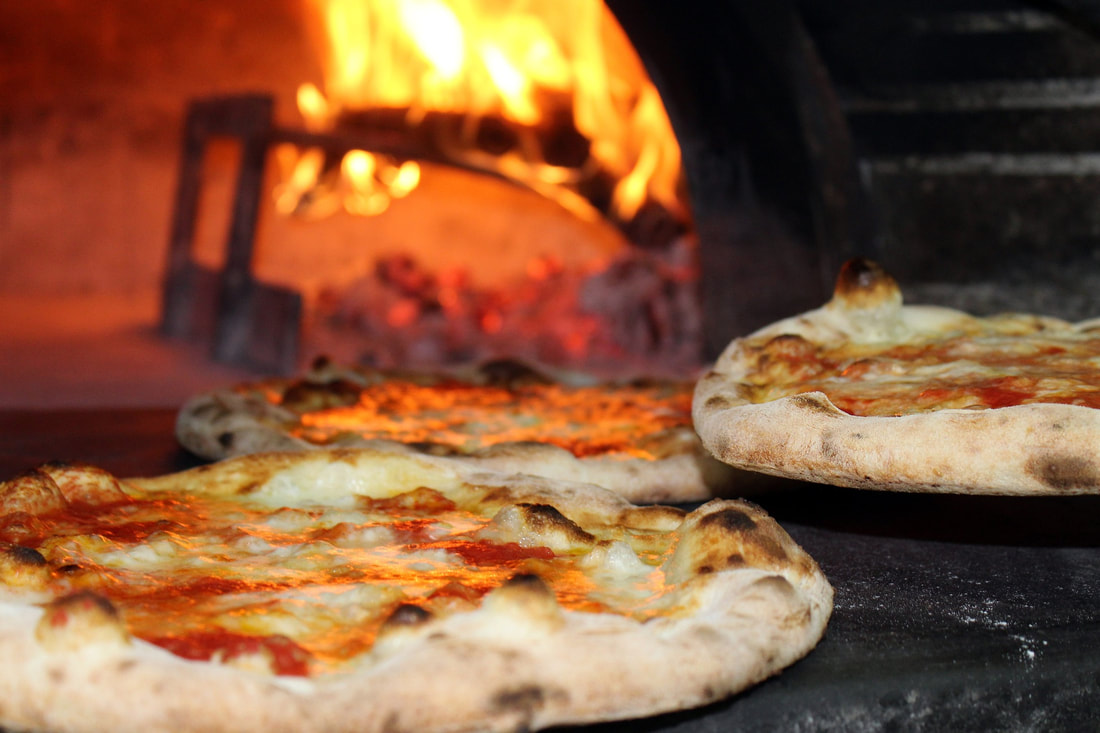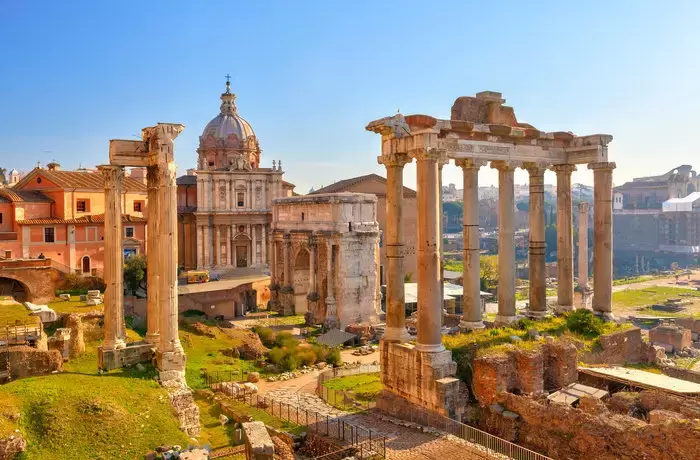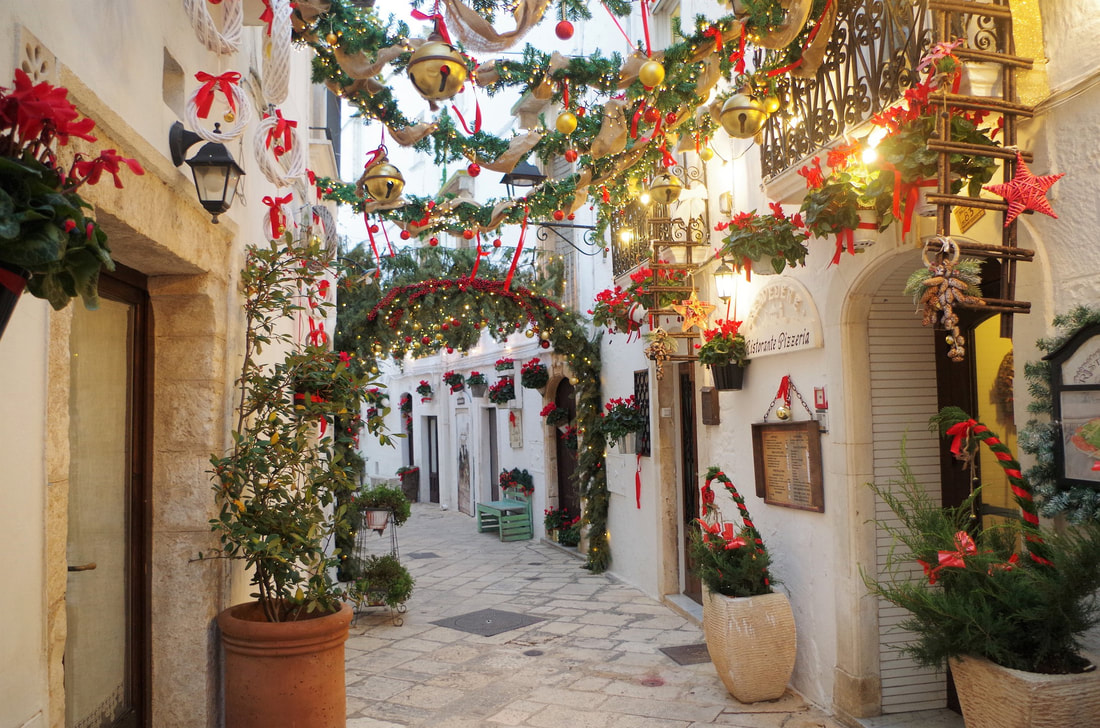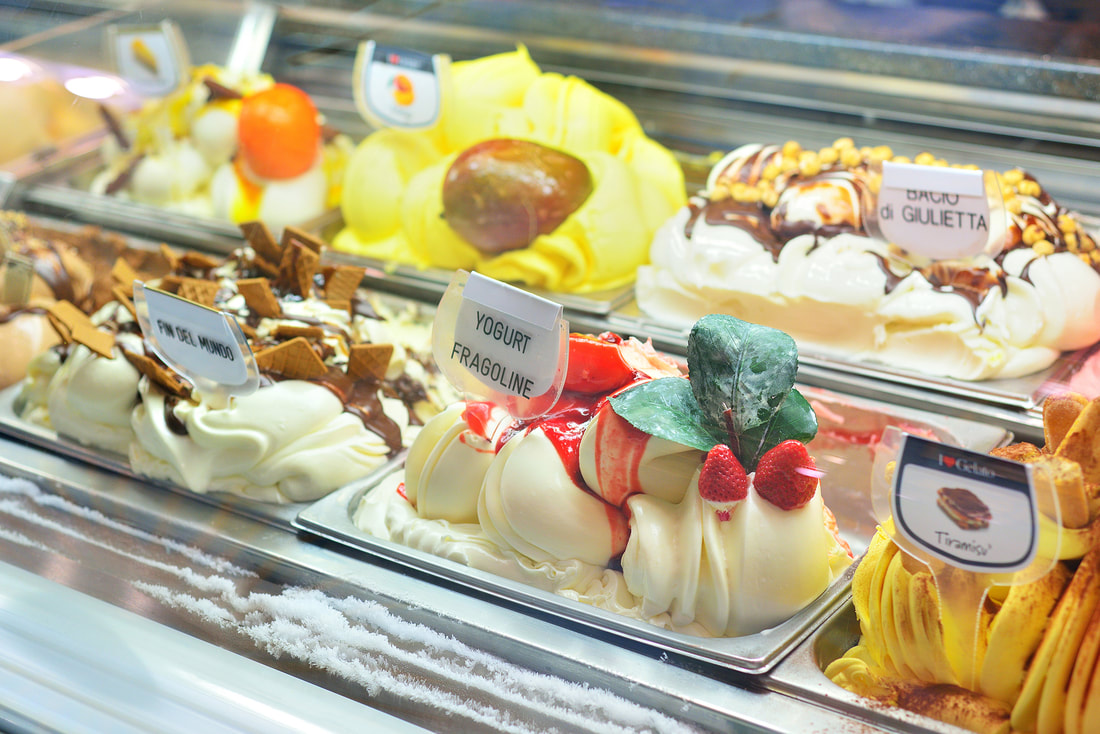 Unique by Region: Italian Food Culture For being such a small country, the 20 regions of Italy are surprisingly diverse. The culture is entirely different between the northern regions and the southern regions – and that includes the cuisine. If you are traveling to Italy with the main goal of eating the most authentic cannoli of your life, you don’t want to spend your vacation in Venice. Venice has its own delicious food culture, but cannoli are not authentically part of it. It’s important to understand that part of the beauty of Italy lies in its diversity within the country. Every region is magnificently unique and each city is distinctive in its own right. Let’s dive into the beautiful differences that exist in il Bel Paese. Locally Grown The regional cuisine is, for obvious reasons, influenced by the landscape and the ingredients available there. Coastal regions, or even just the cities nearest the coast, will favor cooking seafood over farm animals. Up in the hills and mountains, you will find more red meats from pigs, goats, lambs, and even rabbits! Similarly, the vegetables, spices, and herbs most commonly used are determined by what is grown in the region. The south has more spicy spices, like pepperoncini, while the central and northern regions prefer truffles to add a little flair to a dish. Even the bases of dishes are determined by location. Northern regions are more likely to serve rice (like in risotto) or polenta, while southern regions are more likely to use chickpeas as a meal base. Northerners like cooking with butter, but central and southern Italians prefer oil. Neighborhood Influences Up north, high up in the Alps and the Dolomites, you will not find the stereotypical pastas and pizzas that you imagine when you think of Italy. Instead, you will find a healthy mix of Italian pastas with northern European cuisine. Due to the close proximity to France, Switzerland, and Austria, these regions’ food cultures have been influenced by their neighbors. Here you will find a lot of creamy fondue, cheeses, and hearty meat dishes. Coastal port cities, however, like Venice, are even more diverse. They have a lot of influence from distant cultures. Near the old ports, you will find evidence of influence from Arabic, Greek, and north African cultures that crossed the Mediterranean Sea long ago for trade. Regional Divides Dishes are extremely regional. That carbonara you love so much will only be found in traditional Italian restaurants in south-central regions. If you find it anywhere else, you are at a restaurant that is specifically serving dishes from a different region, or you are in a restaurant that caters mainly to international tourists (read as: overpriced and low quality). Dishes are so extremely regional, that some dishes are specifically city dishes. There are some dishes that are amazing and delicious, but you will only find them in that one particular city. Then, there are some dishes that are so good that they have surpassed the one city it originated in, but have kept the name. That’s why you have dishes like Risotto alla Milanese (literally “risotto made in the style from the city of Milan”) and Ragù alla Bolognese (“ragù sauce made in the style from the city of Bologna”). Coffee Breaks First and foremost, let’s clarify one important fact. Italian caffè does not taste like Starbucks. In fact, a menu at an Italian bar (quick café) looks nothing like Starbuck’s menu. Sure, some of the names are the same, like espresso and cappuccino, but they are served quite differently. You won’t see a long line of flavor syrups next to the espresso machine, and you probably won’t find a lot of cozy seats to sip your coffee on (unless the shop is known for serving delicious pastries). Italians don’t sip their coffee slowly. An espresso is typically drank standing up at the bar in a few quick sips. A cappuccino doesn’t come in a take-away cup. And you will never find a macchiato served in a regular-sized coffee mug. The differences between how Italians take their coffee is not huge from the north to the south. The biggest difference stems from which coffee brand or bean is the favorite. Northerners tend to prefer a mild medium roast coffee, especially made from Arabica beans. Southerners, on the other hand, like their coffee extremely hot and strong. Delicacies foodies absolutely have to try, per region: Val D’Aosta – Polenta with fontina cheese Piedmont – any dish spruced up with locally-sourced White Truffles Lombardy – Risotto alla Milanese Trentino-South Tyrol – Speck Veneto – Baccalà (try to open up your appetite with a Spritz drink with Aperol, Campari, or Select beforehand) Friuli-Venezia Giulia – Prosciutto San Daniele Liguria – any dish with Pesto Genovese Emilia-Romagna – Ragù alla Bolognese (pro tip: try it with some Parmigiano Reggiano) Tuscany – Bistecca alla Fiorentina (and be sure to try some of the salt-less Bread) Umbria – Pasta alla Norcina Marche – Brodetto di Pesce di Ancona Lazio – Spaghetti alla Carbonara Abruzzo – Arrosticini Abruzzesi Molise – Cavatelli pasta Campania – Pizza Margherita (then wash it all down afterwards with some Limoncello) Apulia – Friselle Basilicata – any secondo dish with Angello (“lamb”) Calabria – Soffritto di Maiale Sicily – Cannoli Sardinia – Porcheddu Mangiamo!
0 Comments
 While researching beautiful, cultural, and historic places to visit on vacation, you may have come across the phrase “UNESCO World Heritage Site” more than once. But what exactly is a “UNESCO World Heritage Site” and why are those sites supposedly worth visiting? UNESCO stands for United Nations Educational, Scientific, and Cultural Organization. It is an organization that was founded in 1945 after the official end of the Second World War. Their mission is to build international security and encourage world peace through continuous education of the arts, sciences, and cultures. UNESCO seeks to preserve the beauty and history of certain locations by denoting them as “World Heritage Sites”. World Heritage Sites are determined by their “outstanding universal value to humanity”. Not entirely surprising given Italy’s long and rich history, Italy is home to the most UNESCO World Heritage Sites. There are 58 sites throughout the country, many of which are easily accessible from the most popular destination sites for international travelers. We at LagoBlu Travel are happy to help plan a trip to see any Italian UNESCO World Heritage Site that piques your interest. Sites near Rome, Lazio; Did you know that the city of Rome itself is considered to be a UNESCO World Heritage Site? Within the boundaries of the World Heritage site in the historic city center are the Roman Forums, the Mausoleums of Augustus and Hadrian, the majestic Pantheon, Trajan’s Column and the Column of Marcus Aurelius, and all of the properties that make up the extraterritorial Vatican City. This entire site is enclosed by the ancient city walls of Rome. The capital city of Rome has a diverse history that dates back to antiquity. For this reason, some of the greatest historic ruins, preserved artworks, and treasured architectural achievements are located in this city. Other Must-See Sites in the Region: the Etruscan Necropolises of Cerveteri and Tarquinia, Villa d’Este, and Villa Adriana. Sites near Venice, Veneto; The city of Venice and its lagoon also make up a UNESCO World Heritage Site. The city is a conglomerate of 118 small islands, connected by waterways and crossable with waterbuses and beautiful walking bridges. Venice is celebrated by UNESCO for its innovative foundation, architectural developments, and the great artistic works on display in nearly every single building. Some of the greatest architectural works in the city are found in just one piazza, the Piazza San Marco. On the piazza lies the basilica of San Marco, the Palazzo Ducale, and Museo Correr Procuratie Vecchie. Other Must-See Sites in the Region: the City of Vicenza and the Palladian Villas of the Veneto, and Padua’s 14th century fresco cycles. Sites near Florence, Tuscany; Florence, the birthplace of the Renaissance, is also a World Heritage Site. The historic city center is easily walkable due to its small size. Famed artworks by the greatest artists of the Renaissance are on display in its two world-renowned art museums: the Uffizi Galleries and the Accademia Gallery. Here you can view live and in person the massive statue, David, by Michelangelo, and the beautiful Birth of Venus painting by Botticelli. Throughout the city you can find architectural masterpieces by Giotto and Brunelleschi, most notably, their additions to the Cathedral of Santa Maria del Fiore. Other Must-See Sites in the Region: the Medici Villas and Gardens, the Historic Centre of San Gimignano, the Historic Center of Siena, and the Piazza del Duomo in Pisa – which includes its legendarily leaning tower. Sites near Naples, Campania; Naples and the nearby Amalfi coast are popular destinations. Both destinations are also UNESCO World Heritage Sites. The historic city center of Naples was originally founded by the Greeks, giving it a unique history in comparison to other Italian cities. Nearby, the Amalfi Coast has also been denoted as a World Heritage Site. This beautiful coastline features steep hillsides and stunning sea views. The region is speckled with quaint paesini (small towns) and examples of agriturismo (agriculture-based tourist destinations). Other Must-See Sites in the Region: the Archeological Areas of Pompeii (which is also perfectly located for a visit to the source of Pompeii’s doom: Mount Vesuvius) and the 18th Century Royal Palace at Caserta. Other Favorite UNESCO World Heritage Sites; As early as the Paleolithic period, there has been proof of inhabitation in the park of Sassi di Matera. This web of buildings, including homes and churches alike, were built out of naturally occurring caves. The legendary masterpiece by Leonardo da Vinci, The Last Supper, is housed on the wall of the convent of Santa Maria delle Grazie. Both the painting and the church can be dated back to the mid- to late-1400s. The royal Duke of Savoy built his command center in Turin during his time of reign. He and his successors erected and utilized 22 different buildings for the purpose of commanding and residing within the city of Turin and the surrounding countryside. The Residences of the Royal House of Savoy are luxurious pieces of culture and prime examples of the greatest architecture at the time of construction. Within the city of Bologna, there are covered sidewalks. The famous Porticoes of Bologna lend to a unique walking path as you stroll through the city center. The porticoes are not only architecturally beautiful, but also allow visitors to walk in the shade and under cover from rain. Italy has five listed natural World Heritage sites, meaning they are denoted a site because they are precious aspects of nature. Two of Italy’s must-see natural beauties include the Dolomites, the grand mountain range to the north, and Mount Etna, the famous volcano in Sicily. LagoBlu Travel is ready to plan an exciting trip for you and your travel companions to see the greatest sites Italy has to offer. We sincerely hope you are excited to visit some of the country’s cultural, historical, and natural treasures.  In Italy, the Christmas season officially begins on December 8th, the Day of the Immaculate Conception. On this day, families decorate the Christmas tree and begin decking the halls with red and green. Throughout the holiday season, Italian children will snack on dessert breads called panettone and pandoro. These treats will also likely be served after the big meal on Christmas Day. Every church puts out a Nativity scene. The city’s most beloved church will put up the biggest and most extravagant Nativity scene out in the piazza for everyone to enjoy. Some cities even host a grand tree-lighting ceremony in the piazzas. Throughout the holiday season, cities typically host a Christmas market. Most are outdoors, open in the afternoon through late evening, and a huge hit for locals and tourists alike! Visitors can skip dinner for that day, and instead plan on enjoying delicious street foods at the market, like roasted chestnuts or roasted meats, pair with Italian-style hot chocolate or mulled wine. Specialty foods and spices are available for purchase, as well as locally-made hand-crafted goods. This is the perfect place to find a unique Christmas gift for a loved one – or yourself! Christmas Eve, known as La Vigilia in Italian, is a day of feasting. (Come to think of it, most holidays in Italy are a day of feasting!) The main course for dinner is seafood. Every region has its own specific traditional dish, but the seafood theme remains the same. Instead of a grand Christmas Day dinner, Italian families gather around the table for a magnificent spread for lunch. This lunch does not start and end around noon, however. It will start in the early afternoon, and the family likely will not leave the table until well after 6pm. Sometimes the lunch even gradually becomes dinner as well! Families eat, drink, talk, eat again, drink again, play a board game, eat some more, drink some more, and so on for hours on end. One of the most unique traditions that greatly differs from American tradition happens on the official end of the Christmas season, January 6th. Epiphany, as you may know it in English, is more commonly known to Italian children as “the day of La Befana”. La Befana acts much like Santa Claus, bringing goodies to the good little boys and girls of Italy, except that she is an old Italian witch on a broom instead of a plumb old man with a red suit and some reindeer. The night before, children leave out their shoes or socks (much like American stockings), to be filled with gifts of candy from La Befana. If you find yourself traveling to Italy during the holiday season, be sure to scout out all the public Christmas trees on display in big piazzas. Then, stop into the nearest grocery store and pick out a panettone or pandoro – or both! – to treat yourself with something sweet later. In large cities, some restaurants stay open even on Christmas Day, serving special Christmas feasts for travelers without access to their own kitchen so that everyone can enjoy a festive meal. Italy is a great travel location for all, single individuals, groups of friends, and families, especially during the holiday season!
|
Archives
February 2023
Categories |
LagoBlu Travel |


 RSS Feed
RSS Feed